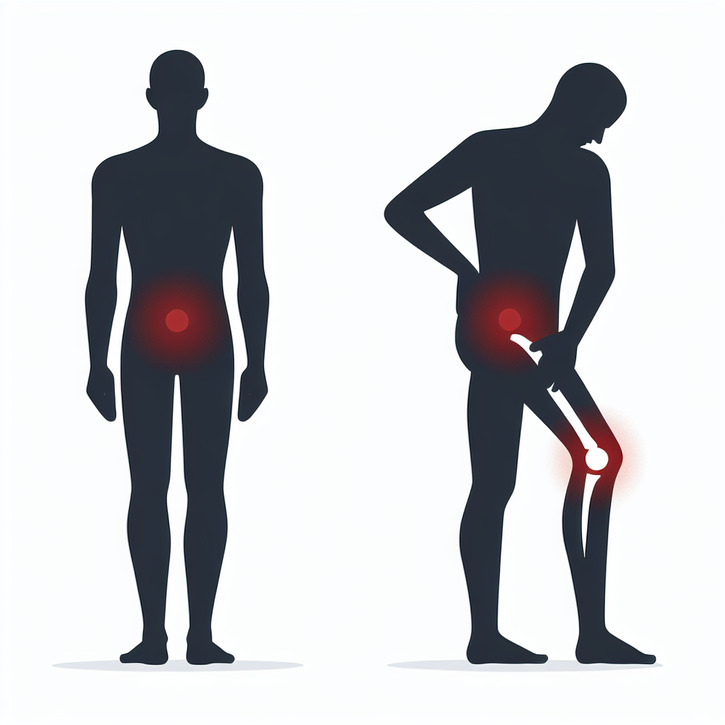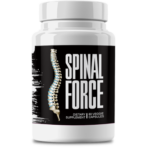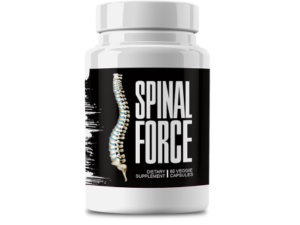This Village-Made Chinese Pain Reliever Eliminates Back And Joint Pain!
Understanding the Root Causes Behind Lower Back and Knee Pain Treatment: Effective Solutions

A Fresh Look at Lower Back and Knee Pain Treatment: Getting to the Heart of the Issue
Ever wondered why so many of us struggle with nagging lower back and knee pain? It’s a topic that’s getting more and more attention, and for good reason—it can really throw a wrench into our daily routines. In this article, I'll walk you through what causes these persistent aches and share some of the most promising ways to tackle them. Having spent over a decade immersed in health concerns like hearing disorders, I’ve seen firsthand how a well-rounded, multidisciplinary approach can work wonders when it comes to pain management.
Each year, millions find themselves sidelined by chronic pain that affects everything from our work routines to the simple pleasures of everyday life. Understanding what’s really behind lower back and knee pain can not only bring a bit of relief, but it might also help prevent bigger issues down the road. Let’s break it all down: we’ll look at the common culprits, explore innovative treatment options, and give you some practical steps towards easing your discomfort. Think of this as a friendly chat mixed with solid, trustworthy advice.
What Exactly Is Lower Back and Knee Pain?
Before you can fix something, you’ve got to know what’s causing it, right? When it comes to lower back and knee pain, the causes can be as simple as a muscle strain or as complicated as degenerative joint issues. For instance, lower back pain might be tied to everyday habits, minor injuries, or even the way we sit, whereas knee pain could be due to overuse, wear and tear on the joints, or inflammation. Getting a clear picture of these definitions can really empower you to seek out the right kind of care.
In everyday language, treating lower back and knee pain means blending medical care with lifestyle tweaks. While the symptoms might look similar, the origins can vary quite a bit—that’s why tailoring the treatment to your unique situation is key. Whether your pain comes from mechanical stress, inflammation, or the slow march of time on your joints, working closely with your healthcare team is the best way forward.
How Pain Affects Daily Life
Lower back and knee pain isn’t just about discomfort—it often touches every corner of our lives. Whether you’re struggling with mobility issues, sleepless nights, or even just simple tasks at home, this kind of pain can really put a damper on things. And let’s face it: the mental toll, including stress, anxiety, and sometimes even depression, is just as important as the physical discomfort. Doesn’t it make sense to treat the whole person, not just the symptoms?
Think about it: whether you’re glued to a desk or chasing after your kids, persistent pain can creep into every part of your day. Over time, you might even develop compensatory habits that further throw off your posture or muscle balance. That’s why a well-rounded approach—one that takes both body and mind into account—is usually the best bet for long-term relief.
A Quick Tour of Today’s Treatment Options
These days, tackling lower back and knee pain isn’t a one-size-fits-all deal. The options range from medications and physical therapy to minimally invasive procedures that are just as cutting-edge as they are effective. Continuous research is refining these methods, meaning that treatment is becoming more personalized based on your specific needs and symptoms.
We’re now seeing both high-tech innovations and tried-and-true methods side by side. Diagnostic imaging like MRIs and X-rays helps pinpoint exactly what’s wrong, while rehab programs focus on strengthening the muscles that matter. And if you’re into alternatives, you might even find a little relief from approaches like acupuncture. The goal is to target the unique causes behind your pain and use a combination of therapies to effectively manage it.
Digging Deeper: What’s Really Behind the Pain?
Mechanical Issues and How Your Posture Plays a Role
Have you ever noticed how a bad day of hunching over your computer can leave your back feeling sore? That’s not a coincidence. Mechanical issues, like poor posture and repetitive strain, are often behind chronic pain in the lower back and knees. These aren’t overnight developments but rather the cumulative result of the habits we build over time. Even something as simple as slouching can put undue pressure on your lower back and knee joints, eventually leading to discomfort or even degeneration.
It’s easy to fall into a pattern of bad posture during daily routines. Without even realizing it, those slight misalignments can add up, stressing your spinal discs and knee ligaments. The silver lining? By focusing on correct posture, integrating targeted exercises, and making ergonomic adjustments, you can really make a difference in reducing that pesky pain.
When Inflammation Joins the Party
Inflammation is like that uninvited guest that just won’t leave. Often a reaction to injury or overuse, it can also be triggered by conditions like arthritis. Ever felt that deep, nagging ache along with swelling and redness? Those are telltale signs that inflammation is at work. Catching these symptoms early means you can jump on anti-inflammatory treatments before things spiral further.
Triggers vary widely—from minor injuries to more chronic conditions like rheumatoid arthritis. The trick to managing inflammation effectively is early diagnosis and prompt action. On top of medications, many healthcare providers now recommend simple lifestyle adjustments, including diet modifications and even natural supplements, to help set inflammation in check.
Understanding the Role of Degenerative Diseases
Degenerative conditions, such as osteoarthritis, are another big player in the world of lower back and knee pain. These conditions slowly chip away at joint cartilage, making the pain worse and mobility more challenging as time goes on. It can be frustrating watching your symptoms worsen over time, but the good news is that early management offers a range of both short-term and long-term options designed to keep pain in check and improve your quality of life.
The best approach with degenerative diseases is proactive. Regular check-ups, guided physical therapy, and sometimes even modern surgical methods can work wonders. Additionally, simple steps like weight management and nutritional changes can significantly reduce joint strain, offering you a better chance at long-term relief.
How Your Lifestyle Shapes Pain Management
Breaking the Sedentary Cycle and Fixing Ergonomics
Let’s be real—today’s modern lifestyle has us sitting more than ever, and that’s a big factor in back and knee pain. Long hours at a desk, hunching over screens without proper support, can lead to muscle imbalances and a whole host of joint issues. Over time, what starts as minor discomfort can snowball into something much more persistent, sometimes even paving the way for serious conditions like disc degeneration or ligament damage.
The key is staying aware. Small changes, like alternating between sitting and standing or investing in ergonomically designed furniture, can dramatically reduce the strain on your body. By tweaking daily habits, you can often nip potential problems in the bud before they evolve into chronic pain.
The Perks of Staying Active
Staying physically active is a no-brainer when it comes to keeping pain at bay. Regular movement not only strengthens muscles and improves joint flexibility, it also helps realign the body. Whether it’s low-impact activities like cycling and swimming or more structured exercise routines, keeping active is essential. And it’s not just about the body—a bit of exercise can work wonders for your mood too.
Studies have shown that people who stick to a regular activity schedule tend to experience fewer episodes of pain. Even something as simple as a daily walk or some light stretching can keep symptoms in check, creating a positive feedback loop that benefits both your body and mind.
Feeding Your Body Right: Nutrition and Weight Management
We can’t ignore the fact that what we eat has a big impact on our joint health. Carrying extra weight puts more stress on your back and knees, worsening pain and potentially speeding up deterioration. Sticking to a balanced diet that emphasizes anti-inflammatory foods, lean proteins, and plenty of fruits and veggies can really help control both weight and inflammation.
Focusing on nutrition isn’t just about shedding pounds; it’s also about giving your body the building blocks it needs to support joint health. Foods rich in omega-3s, like certain fish and walnuts, along with antioxidants from fresh produce, can provide that extra bit of protection against wear and tear. By coupling a healthy diet with your other treatments, you're taking a big step towards a more active and pain-free lifestyle.
Getting to the Bottom of It: How Diagnostics Can Help
The Value of Early Diagnosis
When dealing with persistent pain, getting an early diagnosis is crucial. Waiting too long to consult a professional can often make matters worse. The sooner you figure out what’s causing your pain—be it a mechanical issue, inflammation, or a degenerative change—the sooner you can tailor a treatment plan that really works for you. It’s all about nipping problems in the bud!
Early medical advice sets a solid foundation for effective treatment. With the right tests and assessments, you—and your doctor—can pinpoint the issue before it escalates. This proactive strategy doesn't just alleviate pain in the short term; it also helps minimize the risk of long-term complications.
Looking Inside: How MRI, X-rays, and Ultrasound Make a Difference
One of the coolest things in modern medicine is how imaging technology has revolutionized diagnosis. MRIs, X-rays, and ultrasounds give us a window into what’s really happening inside our bodies. MRIs can reveal detailed images of spinal discs and knee structures, while X-rays are fantastic for checking out bone alignment. Ultrasound provides a quick, non-invasive look at soft tissues and joint movement.
These tools are game-changers for clinicians. They provide the detailed insights necessary for crafting a treatment plan that tackles not only the obvious symptoms but also the underlying issues causing the pain. When you see how technology and professional skill work together, it really underscores the value of modern healthcare.
Putting It All Together With Comprehensive Clinical Assessments
Of course, images and screens can only tell part of the story. Comprehensive clinical assessments—which include thorough physical exams and a deep dive into your personal pain history—are equally important. These evaluations help uncover issues like muscle imbalances and joint instability that might not be obvious on an MRI. It’s the classic case of the whole picture being more than the sum of its parts.
This blend of high-tech diagnostics and traditional clinical insight sets the stage for a treatment plan that’s truly personalized. By factoring in your daily experiences and specific needs, healthcare providers can better tailor their approach to give you the best shot at a full recovery.
Navigating Medical Management Strategies
How Medications Can Offer a Hand
For many, medications are the first line of defense against lower back and knee pain. Whether it’s over-the-counter pain relievers, anti-inflammatory drugs, or even prescription options, these medicines can break the cycle of pain—at least while you’re figuring out long-term solutions. And let's be clear: medications work best when they're just one part of a broader treatment plan that includes both lifestyle changes and physical therapy.
Working with a trusted healthcare provider means you get the right dosage and guidance, making sure the medications you take not only relieve pain but also play nicely with your overall health goals.
When Injections and Minimally Invasive Procedures Step In
Sometimes, if medications and basic therapies aren’t cutting it, more targeted interventions like injections can be a lifesaver. Think corticosteroid injections that work to dial down the inflammation right where it hurts. These procedures often bring significant, though sometimes temporary, relief—which can be just what you need to follow up with physical therapy or other treatments.
The beauty of these techniques is their precision. With the help of modern imaging, doctors can zero in on the exact spot that’s causing trouble. For many, these minimally invasive methods mean fewer risks and a faster return to normal life without jumping straight into major surgery.
Why Teamwork Makes the Dream Work in Complex Cases
Chronic pain can be a real puzzle, and sometimes one specialist just isn’t enough. That’s where a multidisciplinary approach really shines. When orthopedists, physiotherapists, pain management experts, and even nutritionists come together, they cover all bases—from the physical mechanics to the daily habits that might be contributing to your pain.
This kind of team effort ensures that every angle is considered in your treatment plan. It’s like having a personalized pit crew that’s dedicated to helping you get back to feeling your best. The collaborative approach not only makes treatment more effective but also provides a support system that adapts as your condition evolves over time.








